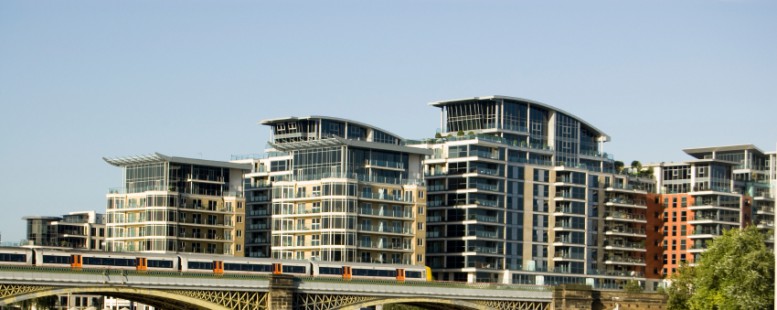Our Opinion: 2018
UK house prices continue to slow, whilst London continues to fall

The consensus outlook for UK house price growth in 2018 and 2019 is about 2-3% per year. Growth has been slowing in recent years, and rose 4.2% in the year to March 2018, according to new data from the Office for National Statistics.
London house prices have lagged UK house prices for the past 15 months. The average London price is down 1% in the past year to March, whilst the UK is up 4%. Meanwhile prime central London, according to Knight Frank, is down 1.4% year on year to May, and 7% since the peak.
Risks to the UK housing market remain the economic backdrop, mortgage rates, changes in the value of the currency; and regulation.
Following the introduction in 2016 of the additional 3% stamp duty surcharge on second homes, and the staged removal of mortgage interest deductions from 2017 to 2020, the proportion of buy-to-let investors in the new-build market has fallen.
The buy-to-let investor has to an extent been replaced by the Help to Buy investor. Currently the buy-to-let investor accounts for 16% of new UK mortgages, down from 20% just over a year ago. With Help to Buy investors now accounting for 40-50% of new-build purchases of private completions, the Help to Buy scheme is underpinning the new-build market, though there must be some concern about what will happen as we approach 2021 – the current lifetime of the Help to Buy scheme.
With approximately 80% of Help to Buy purchases being made by first-time buyers, the first-time buyer is to an extent replacing the buy-to-let investor.
Although mortgage approval data shows a relatively slack trend, the forward looking new buyer enquiries for the UK have recently shown signs of recovery. After 13 months of consecutive negative new buyer enquiries, the metric may indicate an end to this negative trajectory.
The most likely cause of the significant underperformance of London housing is higher prices and thus lower affordability; with less benefit from government incentives and greater impact from the tax changes in the past few years.
Broadly speaking it seems as though the more expensive boroughs are also the worst performing. While the cheaper boroughs are of the best performing boroughs, looking at both the one year and one month change in prices. This is also reflected in the change in transactions, over the last five years. The five most expensive boroughs of London have experienced on average a 39% fall in transactions, while the five cheapest boroughs have had an average increase of 32%.
The universal assumption in the UK is that bricks and mortar are a good long-term investment. This explains the anxiety about the young not being able to get on the property ladder.
The government forecasts that the number of households in England will grow at an annual rate of 0.8% to 28 million by 2039, averaging 210,000 a year. The data suggests that the decline in the number of people per household has flattened out and immigration is down, so household formation could be significantly below the government’s forecast. However, there is pent-up demand from “concealed” households of at least two adults living within another household and of stay-at-home adults. This will underpin demand for some time.
Given low interest rates, affordability for house-buyers is currently pretty good, despite high prices in many areas. There can be little doubt, however, that the long-term trend of interest rates is now upwards, so affordability will deteriorate. Rates may not be going back to their 15% peaks of the 1970s and 1980s, but a rise to 5% is likely in due course. This will suppress prices, even though steadily rising earnings will help affordability.
Taxation is another negative factor. Housing may be free of capital-gains tax for owner-occupiers, but stamp duty has risen for all but the cheapest properties from just 1% a generation ago to a scale ranging up to 12%. The tax deductibility of mortgage interest has gone and taxation on second homes or buy-to-let has been significantly increased. There is more to come; even if Jeremy Corbyn never makes it to Downing Street, a successor government of any colour is likely to significantly increase council taxes and may introduce a property value tax. Finally, the process of house buying has become immensely bureaucratic, time-consuming and costly.
Buying the right property in the right location will always be a good investment, while those buying a house for the long term will, rightly, not be concerned about the prospect for changes in value. They need be in no hurry; the era of rapid house-price inflation is over, so they can afford to wait for the right property, even if that means continuing to pay rent that is higher than the cost of buying.
Those buying for capital gain should realise that the stock-market has been a far better place to invest, with an annualised increase in the MSCI All Countries World index in sterling of 6.9% over ten years and more than 10% over three. This looks unlikely to change.
22ndJune 2018
